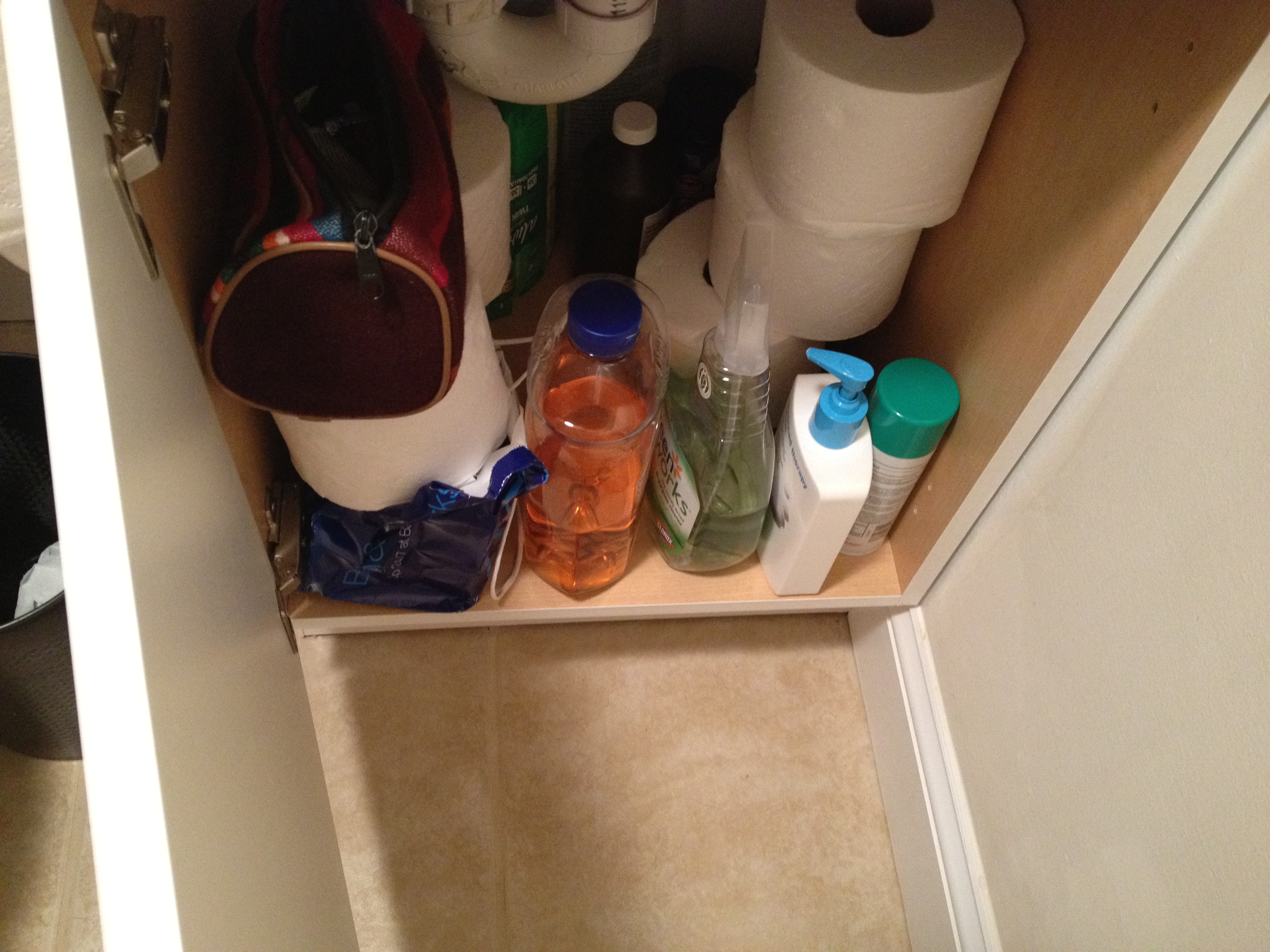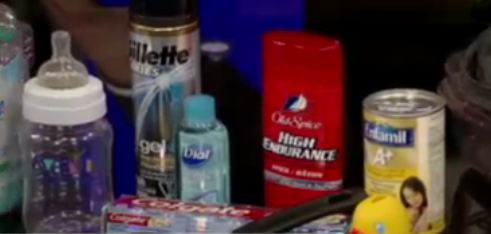Many of Us keep Cleaning Products Under our Kitchen Sink. Do you know what’s under your sink?
Do you have children who you have had to baby-proof your home for? Do you have pets who notoriously get into the garage under the sink when you are gone and eat who-knows-what? Well, you aren’t unlike most of us who have people or animal friends in their home that you want to keep safe and healthy. Not to mention, that there is the implication that some of the cleaning agents that you have been using for ages are not-so-good for you and your health- or the environment for that matter. Lauren Brown touches on all of this in her wonderful break down of what may be under your sink!
 Over the years, we accumulate all sorts of cleaning products. You probably have the staples that your mother and grandmother used, with a few infomercial miracle solutions thrown in, and maybe you also grabbed the newest thing on the shelf. Before you know it, you have quite the collection of products that you may or may not use- or know the harmful effects of! “Going green” isn’t just a cool T-shirt slogan anymore; it is about protecting your family. Some of the most important toxins to avoid are:
Over the years, we accumulate all sorts of cleaning products. You probably have the staples that your mother and grandmother used, with a few infomercial miracle solutions thrown in, and maybe you also grabbed the newest thing on the shelf. Before you know it, you have quite the collection of products that you may or may not use- or know the harmful effects of! “Going green” isn’t just a cool T-shirt slogan anymore; it is about protecting your family. Some of the most important toxins to avoid are:
□ Endocrine Disruptors– these toxins imitate human hormones, which confuses your body and can lead to a disturbing number of health problems such as reproductive, developmental, and behavioral problems, premature puberty, miscarriage, challenged immune systems, certain cancers, and many more.
□ Neurotoxins– these affect your brain activity and can cause headaches, memory loss, and even loss of intellect.
□ Carcinogens– these cause cancer and can promote cancer’s growth.
If you are unsure about the presence of these toxins in your products and don’t know what to dispose of or keep, use these tips:
Take a look under the sink…
□ Take out all of your cleaning products and separate them into groups based on their purpose (sanitizing, glass/windows, grease, etc). Do this when no children or pets are around.
□ Do you need multiples of products that have the same purpose? Probably not. So which ones do you keep and which ones are harmful to you and your family’s health?
 A guide to harmful cleaning products:
A guide to harmful cleaning products:
□ Household products are required to have a “signal word” indicating the level of toxicity.
□ NOTE: These levels are based on a 180-pound male, so imagine the effects on more vulnerable bodies such as children or pets!
| Signal Word | Toxicity level |
| Caution! | 1 ounce – 1 pint may be harmful or fatal |
| Warning! | 1 teaspoon – 1 ounce may be harmful or fatal |
| Danger! | 1 taste – 1 teaspoon is fatal |
□ Given these toxicity signal words, try to eliminate any product stronger than a Caution! From your home.
□ Use up the products that you have (with the exception of the very dangerous ones) and then replace them with healthier choices for the long-term.
-Lauren Brown
Meet my favorite Maid Brigade gal, Lauren Brown, Grass Roots Marketing Specialist, Maid Brigade.
Lauren has been with Maid Brigade for three years, educating the community on the importance of going green for the health of the environment and our families. She emphasizes the value of using safer alternatives and how easy and affordable it can be to go green! Maid Brigade is a residential cleaning service that uses only Green Seal certified cleaning solutions and green methods to clean homes. This ensures a safer work environment for their employees and a safer, healthier home for their clients.
For more green tips, friend Lauren on Facebook and fan Maid Brigade’s local page.
And follow Lauren on Twitter: @LaurenMaidBrgde
Contact info:
LBrown@maid-brigade.com
703-823-1726
For a green home cleaning estimate: www.maids.maidbrigade.com

